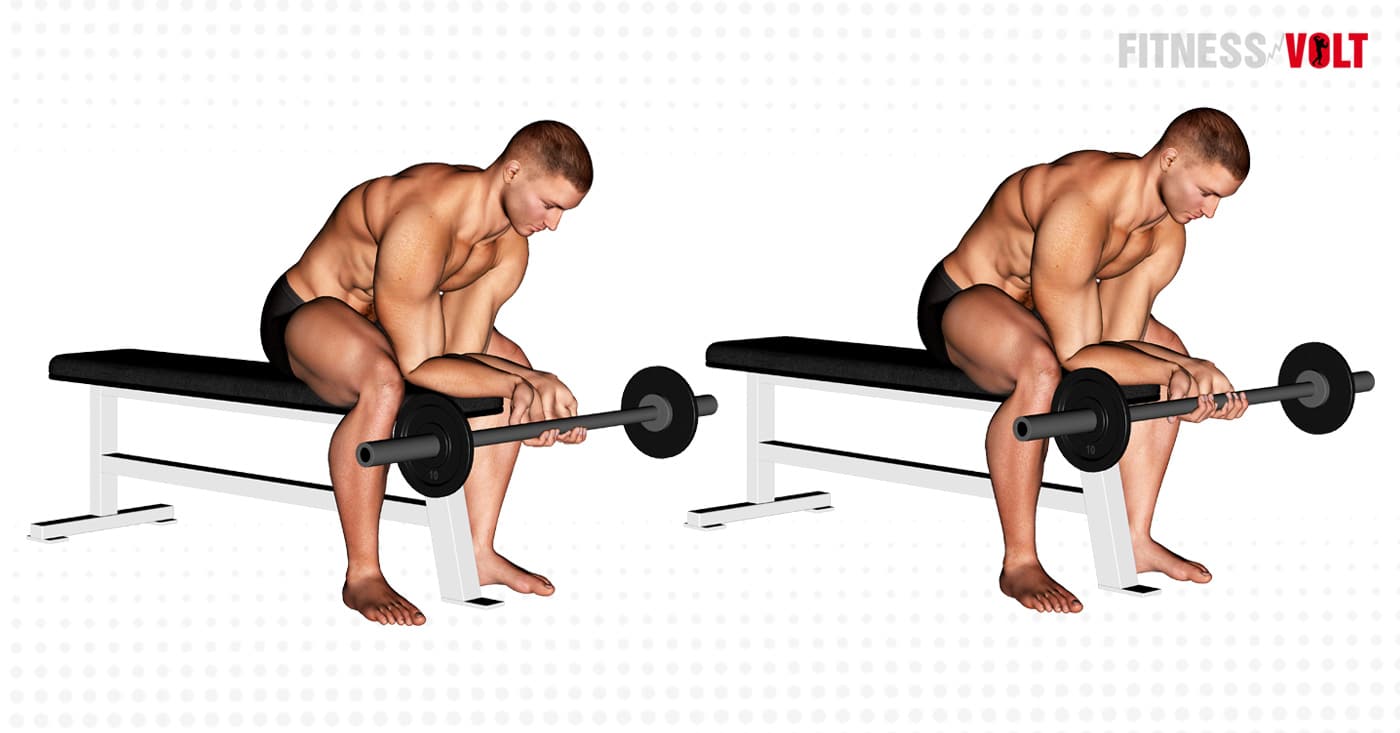
Finger curls are a great way to train the forearm muscles when using lighter weights and proper technique. But many end up using too much weight and this places a lot of stress on the elbows and fingers, and at this point, the risks start to outweigh the benefits.
There are much better ways to train the forearms using heavy weight such as heavy farmers walks, deadlifts, etc. But finger curls help to isolate the forearms and may help to increase their development.
In this guide, we’ve explained how to perform finger curls, plus there are some tips, variations, and we even make a few suggestions for incorporating them into your workouts.
In This Exercise:
- Target Muscle Group: Forearms
- Type: Hypertrophy, strength
- Mechanics: Isolation
- Equipment: Barbell
- Difficulty: Beginner/intermediate
Finger Curls Muscles Worked
The forearm muscles run from the wrist to the elbow and responsible for the movement of the elbow, forearm, wrist, and digits of the hand.
How To Do Finger Curls
- Grab an empty or light-loaded barbell using an underhand grip with hands about shoulder-width apart.
- Hold the bar in front of your body with arms extended while standing with good posture.
- Allow the barbell to slowly roll down into your fingers opening your palms, and then curl your fingers up to roll the bar back into your palms.
- Repeat for the desired number of reps.
Here’s a video example…
Finger Curls Tips
- Again, avoid using heavy weights as this places unnecessary strain on the fingers.
- You can also perform the exercise with your palms facing your body rather than away from it as shown in the video example above. Many find this position to be more comfortable and are able to get a better contraction.
- Many prefer to perform this exercise by holding the barbell behind the back. It may help to get a better forearm contraction.
4 Variations/Alternatives
Here are three variations/alternatives of finger curls.
Wrist curls (not finger curls)
While many find finger curls to be an effective method for forearm and grip training, wrist curls are better when handling heavier poundages. That’s because you’re not rolling the weight into your fingers but rather, keeping it in the palms of the hands.
It doesn’t matter what training tool you use to perform this exercise whether it be a barbell, dumbbell/s, cables, etc.
Seated finger curls
You can also do finger curls seated although it may place more stress on the elbows. That’s why we recommend using lighter weight for this variation/alternative.
Cable standing finger/wrist curls
Cable finger/wrist curl variations are arguably superior because regardless of arm position, there’s constant tension on the forearms. Not to mention, you have the option to use more angles than you would if using free weights, which means that if one position isn’t ideal for you, there are several others you can try to find the best one.
You can use any attachment and you do it standing, seated, and lying on your side. The options are endless.
Smith machine wrist curls
As for using a fixed motion apparatus, Smith machine wrist curls are a great alternative to free weight barbell curls because there’s no balancing or stabilizing the weight.
Despite not having the ability to move your wrists through as much of a natural motion due to the machine being locked in along a fixed path, using the Smith machine surprisingly allows you to get a good contraction of the forearm muscles.
Related: How to Build a Stronger Grip at Home
How To Incorporate Finger Curls Into Your Training Routine
Typically, finger curls are performed after biceps training and/or alongside other forearm-specific exercises. However, it doesn’t necessarily matter when you do them.
But, ideally, you’ll do heavy grip exercises (e.g., static holds, farmers walk, deadlifts, trap bar shrugs, etc) before finger curls as to not exhaust your grip beforehand. Finger curls are of less importance than the aforementioned exercises because strength-focused movements should always be first priority if the goal is maximum strength and development.
Sets/reps
We recommend 2-4 sets of anywhere from 12-25 reps to exhaustion. This ensures the weight is not too heavy but that each set is challenging enough to make it worth the effort.
Wrapping Up
Finger curls are a viable option for training the forearms and grip. There’s a good and not so good way to do them and we suggest taking necessary precautions when weight is supported by the fingers.
But there are also some great variations and alternatives that can also help to develop your forearms muscles. Some may be better in some cases but feel free to use different methods and angles to find what works best for you.
Remember, finger curls should not be your primary forearm exercise but rather a good way to isolate your lower arm muscles.

